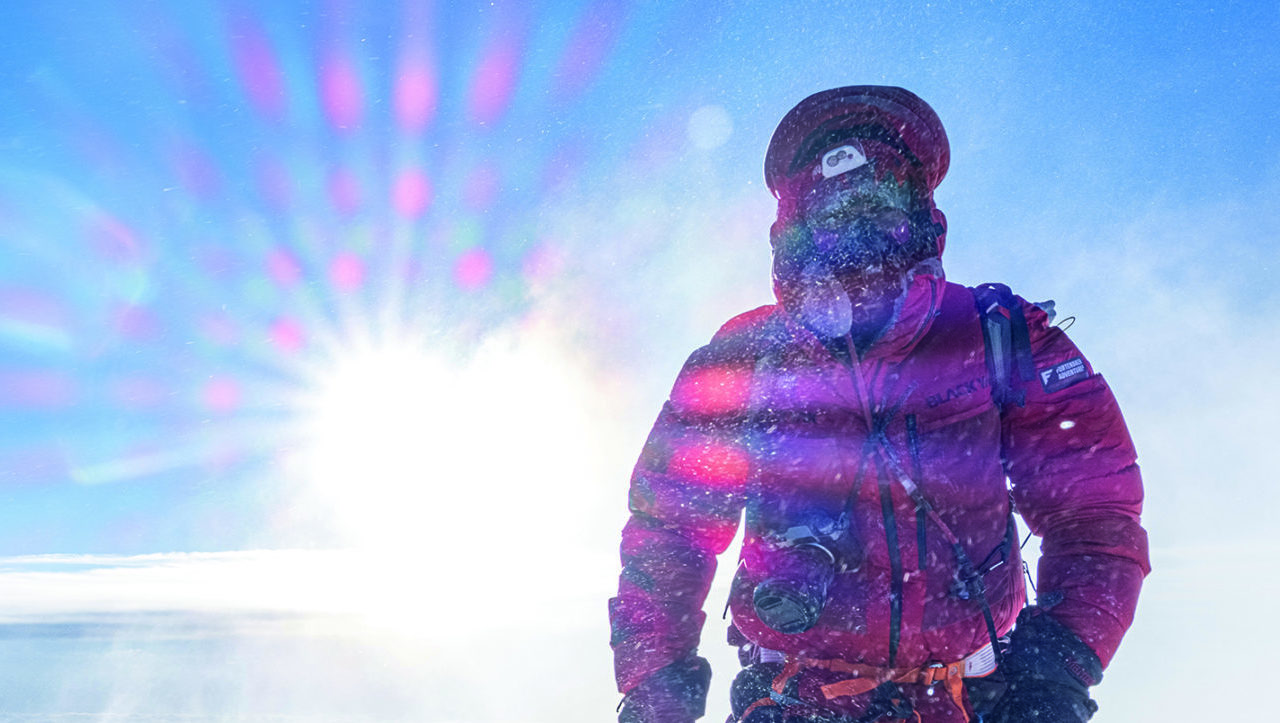The geographer, 10-time Everest climber, cliff skier and adventurer has been to places where most people would fear to tread. Here’s how he stays fit for the world’s biggest challenges
Body
I include four to five short sessions (1-1.5 hours each) and one longer session (3-6 hours) of cardio workout each week. This is what helps me prepare for a standard Mount Everest climb. To prevent my training regimen from becoming too routine or boring, I try to mix things up between cycling, running, swimming, ski-touring or hiking, indoor or outdoor. Interestingly enough, we have clients that prepare for Everest entirely on a treadmill and by climbing stairs in NYC. And it works.
Focusing on specific workout for legs, back and upper body are important, but even better is going to a climbing gym. Not only is it more fun, when you go vertical, it conditions you to carry your body weight on your hands and arms, as well as your back and legs. You have to be fit to climb Everest, but the mental element is probably even more important. Maintaining the balance between your training routine, spending time with your family and your other priorities is critical. You can’t let the training consume you. It shouldn’t become an obsession, since you won`t benefit if you are totally stressed trying to squeeze in your training schedule between work and family obligations.
Mind
Long before an expedition begins, I start visualizing the ultimate moment of success. That’s the mixture of relief and tension when I finally arrive on the summit, the need to stay focused for the descent, and finally the calm when I arrive back in basecamp and all the responsibility, tension and suffering come to an end. I try to do this daily, sometimes even hourly. I burn these success images, and associated emotions, into my memory, as if they have already happened. This way, when conditions get tough up on the mountain, this pre-programmed memory kicks in and helps me to switch into a positive operating mode with a successful outcome always in sight.
Keeping things in perspective also helps. At the end, it’s just climbing a mountain; it’s supposed to be enjoyable. How hard can that be compared to what real challenges other people face in their lives?
Soul
I do what I love and am very passionate about making Everest accessible to others. That passion drives me. Some consider it insane that climbing in one of the most dangerous and hostile environments on this planet is my passion. But the real challenge is tempering my passion – so that it doesn’t cloud my judgment and lead to poor decisions. It’s like that for any of life’s goals. Let passion drive you, but not totally control you.
Nutrition
High altitude mountaineering like any ultra-endurance sport requires a lot of energy. The extreme cold and low oxygen levels quickly deplete the body of reserves. Before the expedition, and when I´m down in basecamp between rotations on the mountain, I try to maintain a well-balanced, but high energy, diet. Fruits, vegetables, whole grain products, legumes, nuts, low-fat meat, eggs and other products rich in proteins is what I eat. Before and during an expedition the body’s energy demand rises by more than 100%. At this time, 60-70% of my meals consist of carbs such as whole grain pasta, rice, potatoes, cereals or lentils. The remaining 30-40% are a balanced mix of vegetable oils (grape, olive or corn oil), high quality animal fats (salmon, mackerel) and proteins from low-fat meat, fish and milk or soy products.







